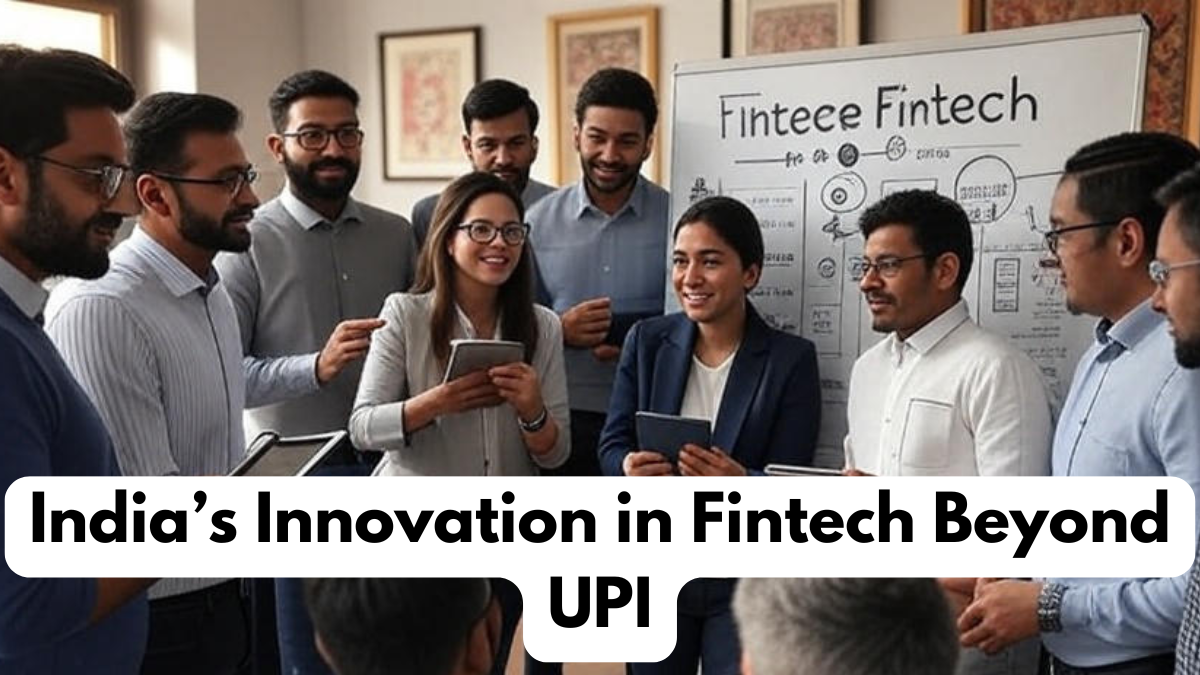India has emerged as a global leader in financial technology, with the success of Unified Payments Interface (UPI) being recognized worldwide. But the story of India fintech innovation does not stop there. New solutions are being developed that go far beyond UPI, transforming how citizens, businesses, and governments manage money. The rise of digital banking is at the heart of this movement, allowing millions of Indians to access financial services directly from their smartphones. This combination of innovation and inclusion has made India a hub of fintech transformation.

The Evolution of India Fintech Innovation
The fintech sector in India has witnessed rapid growth due to government support, a tech-savvy population, and a favorable regulatory environment. While UPI revolutionized peer-to-peer payments, India fintech innovation now focuses on other critical areas like lending platforms, insurance technology, wealth management, and cross-border payments. The increasing adoption of digital banking is central to these developments, giving people greater control and flexibility over financial services.
Key drivers of fintech innovation in India include:
- Strong government initiatives like Digital India and Jan Dhan Yojana
- Affordable mobile data driving financial inclusion
- The rise of neobanks and fully digital banking services
- Start-ups offering AI-powered financial solutions
The Role of Digital Banking in India’s Fintech Growth
Digital banking has redefined how Indians save, borrow, and invest. With services like mobile-first banks, online loan applications, and AI-based credit scoring, the sector is expanding beyond just payments. Many fintech companies are offering personalized solutions, improving convenience while reducing dependency on physical bank branches. This directly supports India fintech innovation, as it makes financial services more accessible to rural areas as well.
For example, rural customers now access credit digitally, small businesses use e-wallets for transactions, and investors rely on robo-advisors for wealth management. Together, these changes demonstrate how digital banking is shaping the future of India’s economy.
Comparative Table: Traditional Banking vs Digital Banking
| Feature | Traditional Banking | Digital Banking (Fintech Innovation) |
|---|---|---|
| Accessibility | Limited to physical branches | Anytime, anywhere through mobile apps |
| Cost Efficiency | Higher operational costs | Lower costs with automation and AI |
| Services Offered | Savings, loans, limited online services | Loans, investments, insurance, payments |
| Customer Experience | Paper-heavy, time-consuming | Fast, paperless, seamless |
| Role in Fintech Growth | Supportive but slower | Core driver of India fintech innovation |
This table highlights why digital banking is a central force behind the ongoing wave of India fintech innovation.
Challenges Facing India’s Fintech Sector
Despite its rapid growth, challenges remain for India fintech innovation. Cybersecurity threats, data privacy issues, and regulatory hurdles often slow adoption. Many users in rural regions still lack digital literacy, limiting the impact of digital banking in underserved areas. Additionally, competition among fintech start-ups is intense, which creates sustainability challenges.
For fintech to thrive further, strong data protection laws, better cybersecurity frameworks, and public education campaigns are essential. Partnerships between traditional banks and fintech players will also play a crucial role in balancing innovation with trust.
Conclusion
The success of UPI was only the beginning of India fintech innovation. Today, digital banking is transforming the financial landscape, opening new opportunities for individuals and businesses alike. With a supportive ecosystem and a focus on security, India has the potential to become the world’s leading fintech hub. The future will depend on how well innovation aligns with accessibility, safety, and long-term sustainability.
FAQs
How has India fintech innovation progressed beyond UPI?
It has expanded into lending, insurance, wealth management, and cross-border transactions, driven by digital banking solutions.
What role does digital banking play in India’s fintech growth?
Digital banking makes financial services accessible anytime and anywhere, driving financial inclusion and customer convenience.
What challenges are faced by India fintech innovation?
The major challenges include cybersecurity threats, lack of digital literacy, and regulatory hurdles.
Is traditional banking still relevant in the era of digital banking?
Yes, traditional banking remains important, but digital banking is taking the lead in driving efficiency and wider access.
Click here to learn more